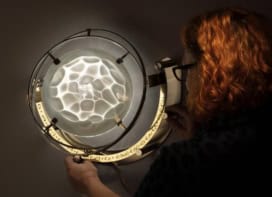Michael Rowan-Robinson is head of the astrophysics group at Imperial College London

What are the three best popular-science books?
I think I have to start with Galileo’s Starry Messenger (1610), the wonderful popular account he gave of his first weeks with the astronomical telescope. Almost on successive nights he discovered the moons of Jupiter, mountains on the Moon and that the Milky Way is made of unresolved stars. I found this a tremendous inspiration when I first read the book as a postgraduate.
There has been a wealth of excellent books on modern cosmology, starting with Edwin Hubble’s influential but dry The Realm of the Nebulae, but the one I choose is Steven Weinberg’s The First Three Minutes (1977), which gives a fascinating account of how the early universe has become the playground of the particle physicist.
Finally I’d like to mention Edward Harrison’s brilliant Darkness at Night (1987), with its superb account of the paradox of the darkness of the night sky and its resolution by Edgar Allan Poe.
What science books are you currently reading?
Nancy Greenspan’s biography of Max Born, End of the Certain World. Born’s crucial role in the development of quantum theory is sometimes overshadowed by the dominant figures of Bohr, Heisenberg and Schrödinger.
What else are you reading?
Pseudonymous Shakespeare by Penny McCarthy, which argues that during his twenties Shakespeare was part of the literary coterie that included Philip Sidney and Edmund Spenser, and that he wrote under a variety of pseudonyms. It’s wonderful detective work that, if correct, will revolutionize our understanding of Shakespeare’s development.
Which popular-science book have you never read, but feel you ought to have tackled, and why?
A book I keep meaning to read is Aristotle’s Meteorologia, which includes his (incorrect) theories of comets, shooting stars and the Milky Way.



